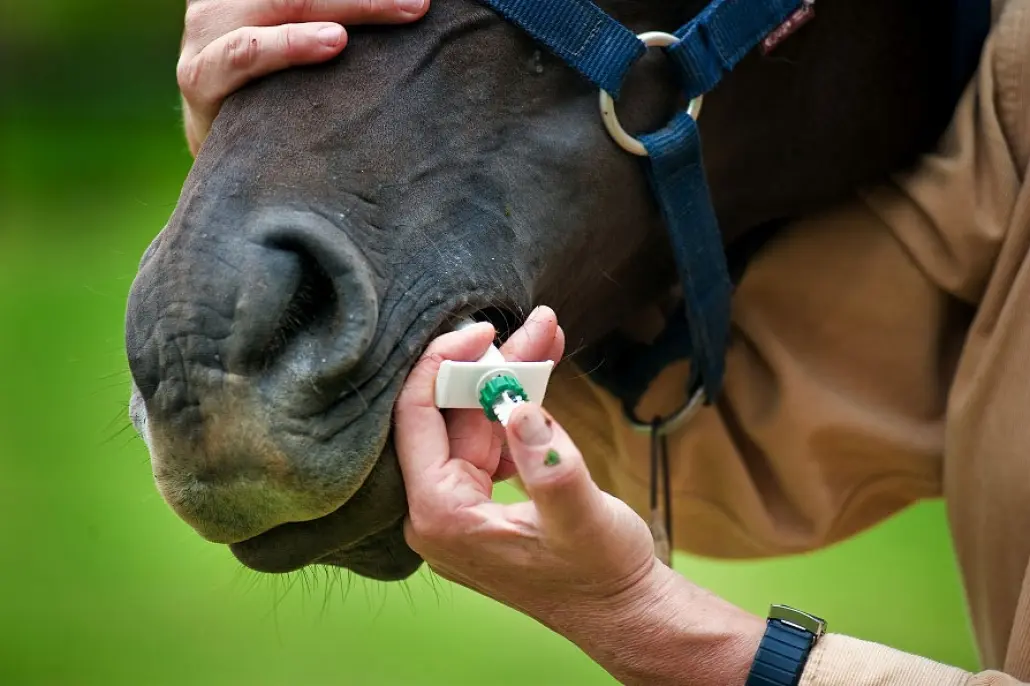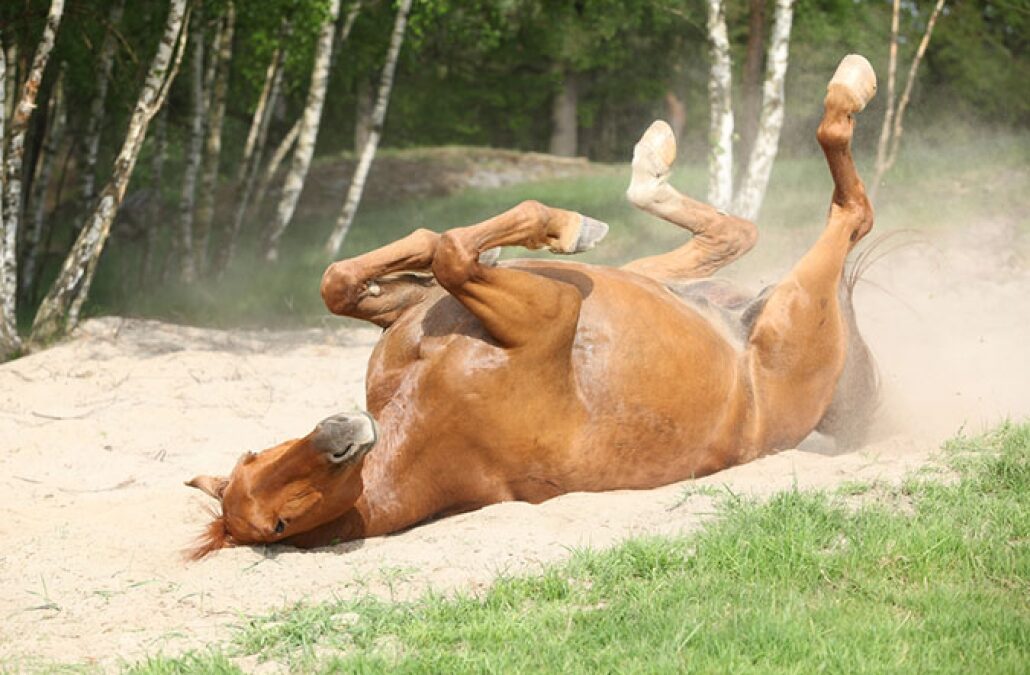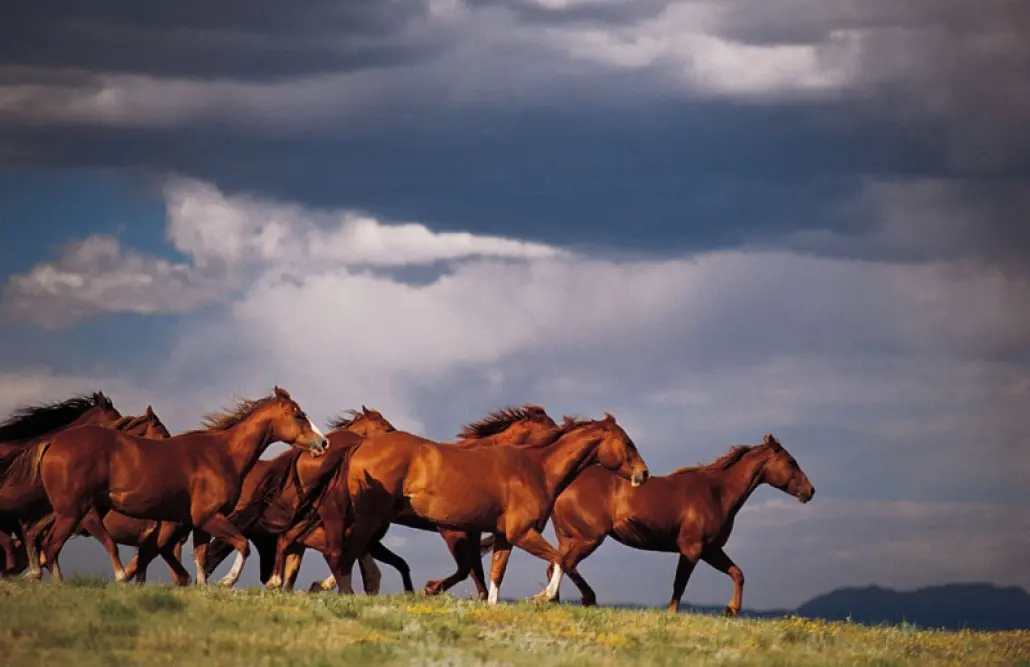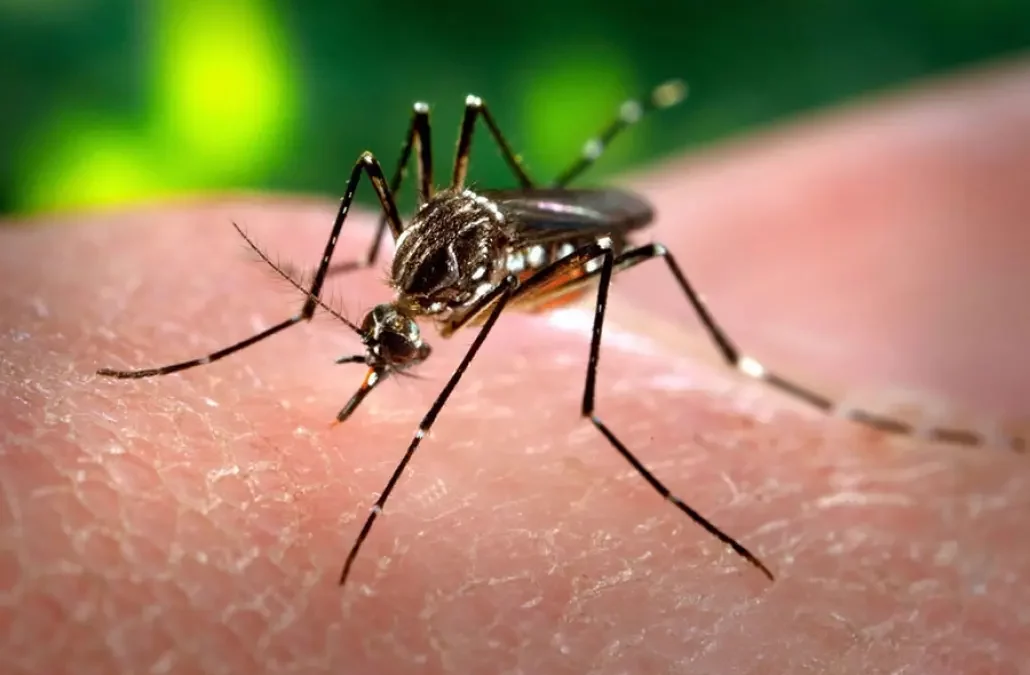Rotation Deworming Schedule: It is recommended to deworm every two months.
| Rotation | Time of Year | Compound |
| 1 | January/February | Pyrantel |
| 2 | March/April | Benzimidazole |
| 3 | May/June | Ivermectin |
| 4 | July/Aug | Pyrantel |
| 5 | Sept/October | Benzimidazole |
| 6 | November/December | Ivermectin |
Horse Worm Facts:
Pinworms: Pinworm eggs are picked up by horses from contaminated feed, water, bedding, and may also be present on tail wraps, grooming materials, and even fence posts and stalls. The female pinworm deposits eggs around the anus, secreting a substance which can cause intense itching. This may lead to tail rubbing and even injury to the tail and rump. Washing the perianal region may help relieve the itching, but all materials used should be discarded or washed in hot water with soap. Pinworms may be difficult to diagnose in manure samples, but the eggs can usually be picked up on scotch tape pressed to the skin near the anus.
Ascarids (large Roundworms): The adult stages of the large roundworm is found in the small intestine, where the female passes large numbers of eggs into the manure. In about two weeks, these eggs become infective and the horse picks them up while grazing. The larvae migrate into the blood vessels and are carried to the liver and lungs. The immature worms are coughed up and swallowed, maturing in the small intestine to complete the life cycle.
Bots: Bots are the immature maggot stages in the life cycle of the bot fly, the adult of which resembles the honeybee in general appearance. The females lay their eggs by attaching them to the hairs of the front legs, throat, and under line. As the horse licks itself, the larvae attach themselves to the lips and tongue and burrow into these tissues. After about three weeks they attach themselves to the lining of the stomach, where they may remain for several months, causing additional damage.
Large Strongyles (Blood Worms): Adult strongyles are found firmly attached to the walls of the large intestine, where the females pass large numbers of eggs into the manure. These eggs hatch and the larvae climb blades of grass and are swallowed. The larvae then migrate to the large arteries which supply the intestines. As the artery walls are damaged, blood clots form and break away, causing colic.
Small Strongyles (Cyathostomins): Ubiquitous parasites, infecting nearly all grazing horses. Relatively mild pathogen, except when present in large numbers.
Tapeworms: Difficult to diagnose, it is estimated that 40% of the horses in the U.S. are affected. Tapeworms are contracted during grazing, when the horse ingests the intermediate host, a mite found on plants. Once infected, tapeworms contribute to digestive problems, colic and malnourishment. Tapeworms are often undetected using normal fecal flotation methods.






